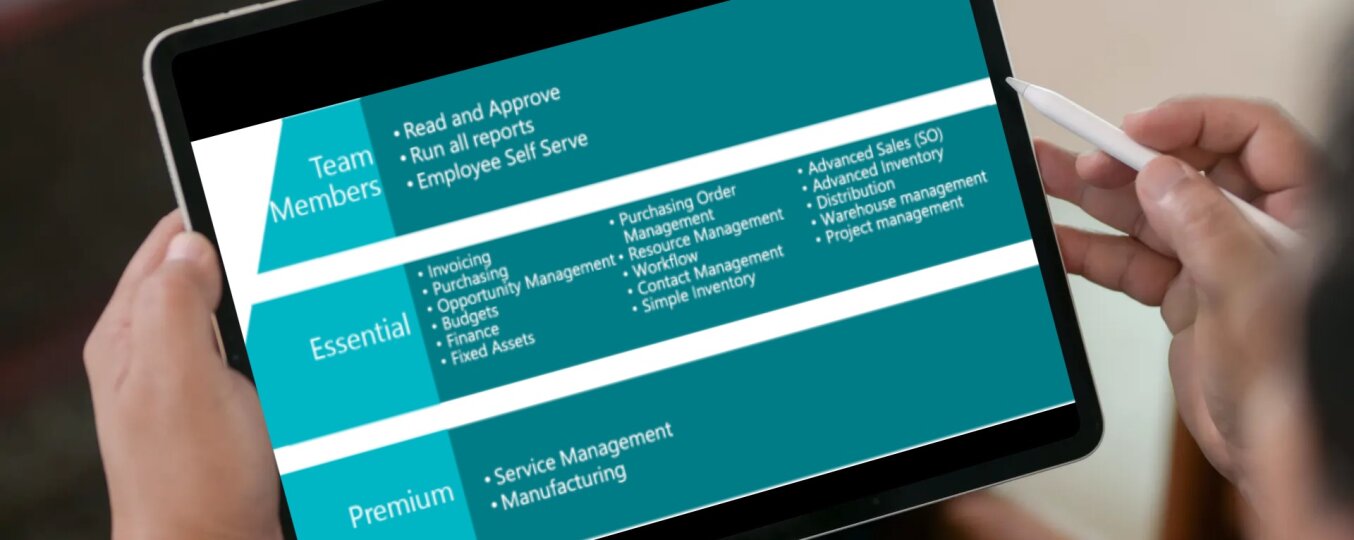License models
Dynamics 365 Business Central is available in two license models
- Perpetual – it’s a one-time license. It is a relatively big expense that pays off after 2-3 years.
- Subscription – in this case payments are made every month. There is a possibility to flexibly adjust the number of purchased licenses in each settlement period.
Dynamics 365 Business Central licensing is based on the purchase of a license for each named user. In other words, each person working with the system needs a separate license. There is a two types of licenses (Full Users and Team Members). The license for FULL users is available in two versions (Essentials and Premium).
Functionalities
| TEAM MEMBERS | ESSENTIALS | PREMIUM | |
| Read and approve | ✔ | ✔ | ✔ |
| Reports | ✔ | ✔ | ✔ |
| Purchases | ✔ | ✔ | |
| Finance | ✔ | ✔ | |
| CRM | ✔ | ✔ | |
| Human Resources | ✔ | ✔ | |
| Workflow | ✔ | ✔ | |
| Warehouse | ✔ | ✔ | |
| Sales | ✔ | ✔ | |
| Projects | ✔ | ✔ | |
| Service | ✔ | ||
| Production | ✔ |
Team Members
The Team Members license is recommended for users who do not work in the system on a daily basis or who only need basic functionalities in the form of data reading. A common example of TeamMembers users are people working in production.
- Read and approve.
- Updating existing data (e.g. customer, vendor).
- Approval or rejection tasks in workflow.
- Access to the PowerApps application.
Full Users
Full users are everyone who needs unlimited access to the system. These can be people working in the financial department, sales people, production / warehouse managers and management staff.
The Essentials license covers the following modules: finance, sales and purchasing, warehouse, CRM, human resources management and project management.
The Premium license has been additionally equipped with the “service” and “production” modules.
In addition, an external accountant license is a rare but available type of license. This license has limited access to some administrative settings and functionalities.
Recommended materials
